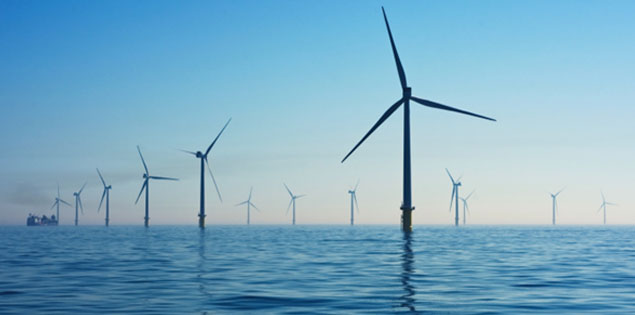Role of hydrogen in reaching net zero
Russia’s invasion of Ukraine as well as unparalleled temperature rise in Arctic, Antarctic Poles, parts of central, south, and western Asia have once again underlined renewable energy’s dual benefits: reduction of emissions and ensures energy security. Decarbonization goals are driving increased interest in hydrogen around the world. This is because itofferslong-term, scalable, and cost-effective solutions to enable the decarbonization of sectors such as heavy industry, aviation, maritime, ammonia and buildings, while also complementing technologies like renewable power, biofuels, or energy efficiency improvements. It has an annual abatement capacity of 7 gigatons (GT). By mid-century, its use can prevent 80 GT of CO2 emissions and contribute around 20% of the entire abatement. Accordingly, hydrogen has a crucial role in helping the world reach net-zero emissions by 2050 and limit global warming to 1.50 Celsius.
Developments in the hydrogen economy
2021 was a defining moment for hydrogen development with over 520 projects announced worldwide for clean hydrogen supply, infrastructure, and many more. Europe accounts for the largest share of announced projects, followed by Asia and North America. Today, there exists more than 75 million tons of hydrogen demand from industries. Research shows that by 2030, the overall sum of estimated spending would exceed US $600 billion, owing to investments to meet government targets and support equipment value chain. Furthermore, according to Energy Transition Commission, hydrogen use will reach 500-800 million tons/year by 2050.
As far as green hydrogen is concerned, more than 30 national hydrogen strategies and roadmaps have been released, pledging a 400-fold increase in clean hydrogen installed capacity this decade, as compared to 2020. Based on a Goldman Sachs’ estimate, US $5 trillion is the required cumulative investments in the clean hydrogen supply chain. Around US $15 trillion investment will be required for decarbonizing energy and other industries using hydrogen from now till 2050.
Various countries are coming forward with plans to promote and accelerate hydrogen production. Germany has approved a “package for the future” worth US $7.39 billion to accelerate hydrogen technologies nationally, with an additional US $2.11 billion to promote international partnerships. Emerging markets are also demonstrating action. India’s new policy provides free power transmission for any new renewable energy facilities built before July 2025 to supply power for green hydrogen production.
Challenges and opportunities for the economy to shift from grey to green hydrogen to achieve the net zero goal
Significant amount of investment will be required in the hydrogen sector to cater its ever-growing demand. In order to achieve the net zero goal, decarbonizing the existing hydrogen-based economy is also critical. The major challenges in deploying green hydrogen as an enabler of the energy transition and global decarbonization, have been identified as a lack of infrastructure and inadequate finance. At present, grey hydrogen is used at an industrial level, which is almost entirely supplied from coal and natural gas. Its production causes 830 million tons of CO2 emissions per year. In reality, reducing emissions from current production is difficult. Hence, decarbonizing existing hydrogen demand represents widespread opportunities to enlarge the scale of clean hydrogen worldwide.
Additionally, the hydrogen power system involves high-levelized production and incorporation cost. The development pace of hydrogen infrastructure is also slow which affects its widespread adoption. Given the nascent stage of hydrogen market, strong and innovative financial mechanisms to close the economic gap is critical.
Here, transition finance has the ability to offer high-emitting companies financing for their shift towards attaining net zero. Transition bonds can be issued to facilitate a new pool of liquidity for projects and assist issuers in transitioning to greener business practices and decarbonizing their operations. For instance, in the case of Northern Gas Networks (NGN), a British company responsible for gas distribution to 2.7 million homes and businesses, the network issued green transition bond along with Abundance (UK’s ethical leading crowdfunding platform) to fund their hydrogen transition, mainly to support hydrogen pipeline infrastructure. It launched a US $1.24 million issuance with returns of 1.6% per year over a 10-year term. Under this, its 2900km pipeline infrastructure would be replaced by 2026, assisting NGN in developing a hydrogen-ready gas network and achieving a carbon reduction objective from day-to-day operations. Similarly, Cadent, UK’s largest gas distribution network, which delivers gas to 11 million homes and businesses, launched a 12-year, US $ 528 million transition bond to invest in retrofitting gas distribution network to carry hydrogen. This initiative would contribute to Cadent’s goal to reduce GHG emissions by 2050.
Moreover, in October 2021, the Clean Hydrogen Infrastructure Fund was launched by energy giants like Total Energies, Air Liquide, VINCI to speed up the growth of the clean hydrogen market by investing in projects across the hydrogen value chain. It has a goal to reach US $1.58 billion. As a partner or financier, the fund supports projects in the renewable energy and low-carbon hydrogen generating, storage, and transportation sectors throughout the Americas, Asia, and Europe. More funds like this could be launched and utilized to attract and raise finance in green hydrogen projects.
If the existing hydrogen economy becomes successful in attracting the necessary investment to fulfil the future demand and simultaneously become green and sustainable as a whole to supply clean energy, it might mark a turning point in the worldwide net zero journey.
Bibliography
https://www.nature.com/articles/d41586-022-00969-9
https://www.washingtonpost.com/weather/2022/04/25/india-record-heat-march-april/
Hydrogen-for-Net-Zero_Full-Report.pdf (hydrogencouncil.com)
https://www.goldmansachs.com/insights/pages/from-briefings-17-february-2022.html
https://www.weforum.org/agenda/2021/07/clean-energy-green-hydrogen/
https://www.businessfrance.fr/discover-france-news-presentation-of-the-france-2030-plan
https://www.csis.org/analysis/germanys-hydrogen-industrial-strategy
Explained: What is the government’s green hydrogen policy? | Explained News,The Indian Express
cbi_fincredtransitions_final.pdf (climatebonds.net)
https://cadentgas.com/news-media/news/march-2020/cadent-issues-uk%E2%80%99s-first-transition-bond
Industrial, Energy Giants Launch Fund to Accelerate Clean Hydrogen Ecosystem – ESG Today

